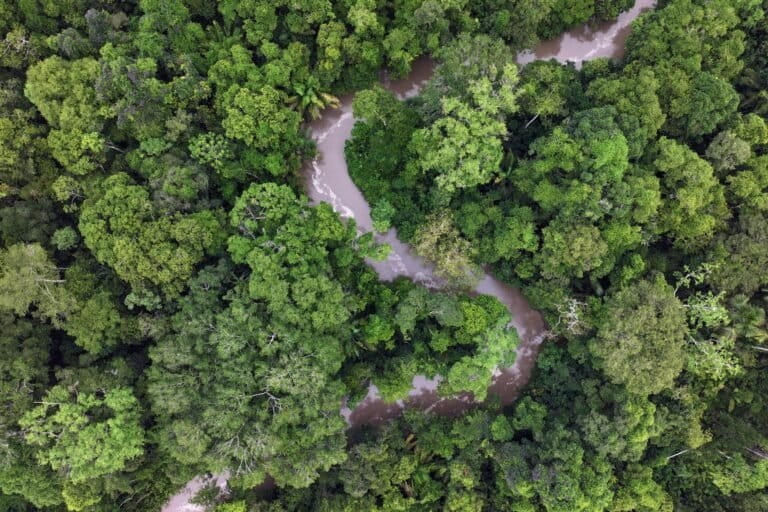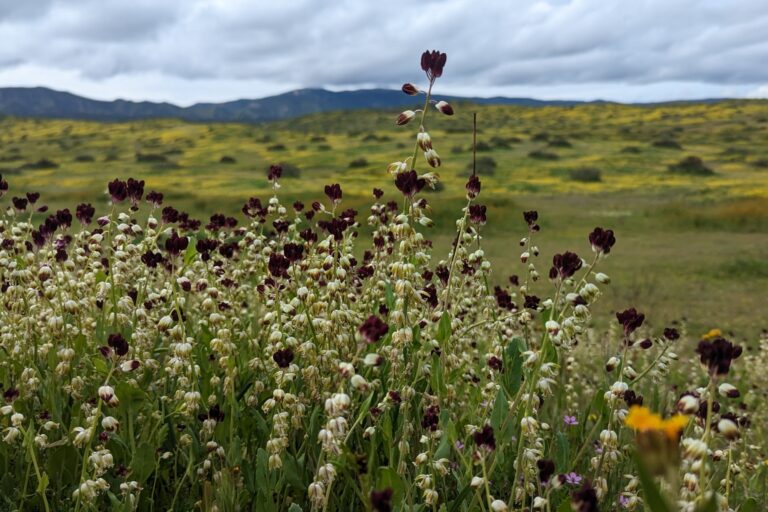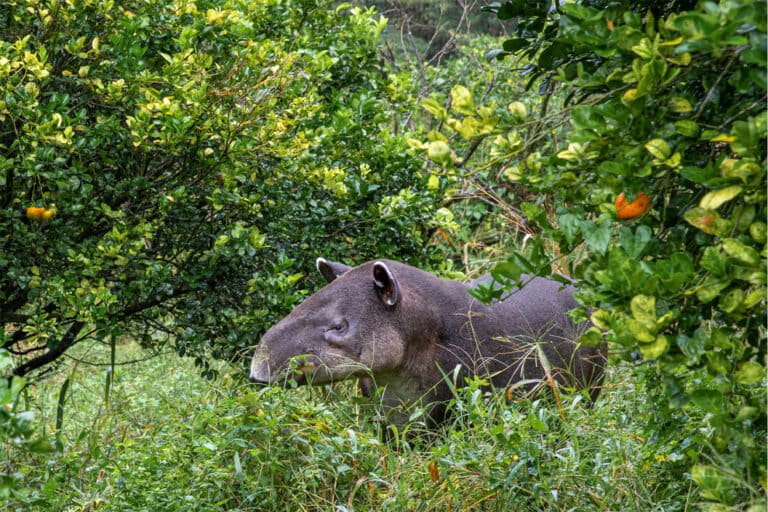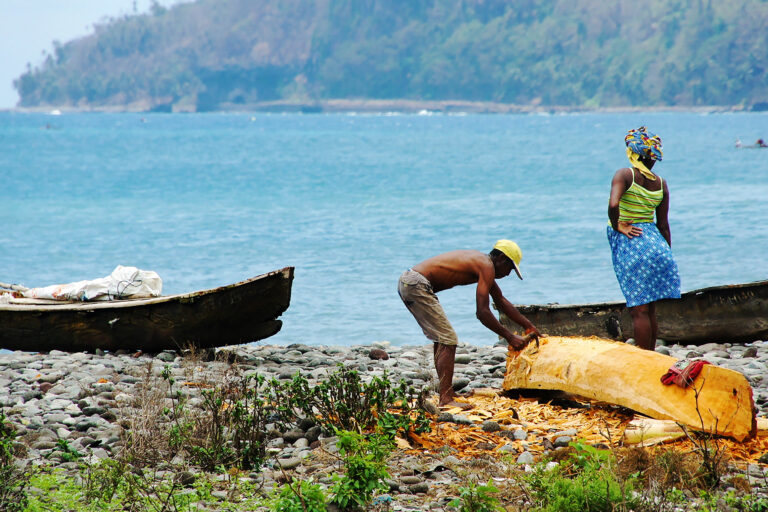- Avian flu, also known as H5N1, spread through marine mammal colonies in Argentinian Patagonia in August 2023, nearly doubling the death rate among southern elephant seals in some areas.
- In a recent land survey, researchers found no new cases of the disease among the seals, signaling an end to the outbreak, at least for now.
- But they also found that the total number of elephant seals had decreased by as much as 66% in some areas, the direct result of the high mortality rates during last year’s outbreak.
- Colonies will only recover with undisturbed seasons of breeding and molting, as well as access to abundant food, experts said.
An epidemic of avian flu in Patagonia appears to be on the decline after decimating southern elephant seal populations for the last year and half, with researchers finding no new cases in recent surveys of the coast. But the recovery process for many colonies, which were nearly wiped out in some areas, could be just beginning.
The H5N1 influenza hit populations of southern elephant seals (Mirounga leonina) and other marine mammals and birds in August 2023, spreading across multiple provinces of Argentinian Patagonia and sending researchers scrambling to study the outbreak. With cases now on the decline, researchers are turning their attention to studying the worst-hit colonies as they recover their previous population numbers, a process that could take decades.
“There were no mortality events from avian flu” observed during the recent surveys in the province of Chubut, said Valeria Falabella, the director of coastal-marine conservation at the NGO Wildlife Conservation Society (WCS) Argentina. “The not-so-good news is that the number of individuals, most notably reproductive females, was way below what was expected.”
The 300-kilometer (186-mile) coastline of the Valdés Peninsula, a popular breeding area for southern elephant seals, saw 17,400 of the 18,000 pups die at the end of last year, according to a December 2023 study in Marine Mammal Science. Usually only approximately 180 die. The study described the spiking mortality rate as “catastrophic.”
The flu likely jumped to marine mammals in the area from South American terns (Sterna hirundinacea), mostly affecting elephant seals but also spreading to sea lions (Otaria flavescens) and fur seals (Arctocephalus australis), researchers said. They worried the flu would jump to other species, such as orcas (Orcinus orca), which feed on seals, but that threat never appeared to materialize.

H5N1 influenza is present in bird species across the globe and has caused outbreaks in poultry and dairy cows in the U.S., while also spreading to other marine mammal species in South America. In isolated cases, it has also spread to humans, often because they have regular contact with infected animals.
The rapid elephant seal die-off altered social structures in many colonies, according to a study in Nature Communications, with less-dominant adult males replacing dead alpha males. There was also a “patchy distribution” of females with pups, which are usually more densely packed together, as well as abandoned sick pups, the study said.
Researchers from various NGOs, universities and government agencies have been monitoring elephant seal populations on the Valdés Peninsula since the 1980s. This most often takes the form of a land survey that involves walking the beaches and manually counting the animals. When conditions allow, they also conduct aerial surveys.
This year, they didn’t identify any animals, alive or dead, with avian flu symptoms.
“We were prepared for a new outbreak,” Falabella said. “It was something we expected and that was very possible. It was so lucky that it didn’t happen because another blow like last year — I don’t know what would have happened to this population.”
While the absence of flu cases is promising, Falabella said the outbreak will pose long-term challenges. This season, WCS researchers found the total number of elephant seals had decreased by as much as 66% in some areas compared to the previous year, while the number of adult females had decreased by between 30% and almost 70%.
Male elephant seals can mate with multiple females, so more females means more opportunity to reproduce.
The number of weaned calves also dropped by 82%, they found. The diminished numbers were a direct result of the high mortality rates during last year’s outbreak.
Previously, researchers weren’t sure about the mortality rate in adults because, unlike pups, many sick individuals were able to swim out in the ocean to feed and then died out of sight. This year’s preliminary findings suggest that more adults died than researchers first thought.
For some populations, recovery could take years, Falabella said.
In the meantime, there isn’t much WCS and others can do to help the colonies, except continue monitoring for potential outbreaks, as other strains of avian flu are circulating throughout South America. In Chile, a strain of the flu has hit various marine mammal species in the very north of the country down to Patagonia.
Colonies will only recover with several undisturbed seasons of breeding and molting (in which seals shed and replace their fur and skin), as well as access to abundant food, Falabella said.
“This year, we’re crossing our fingers. Hopefully, it will continue like this,” she said, noting that the seals are already at the end of the reproductive season, which lasts from August to November.
Banner image: Elephant seals on the Valdés Peninsula Photo by Adriana Sanz/WCS.
Citations:
Campagna, C., Uhart, M., Falabella, V., Campagna, J., Zavattieri, V., Vanstreels, R. E., & Lewis, M. N. (2023). Catastrophic mortality of southern elephant seals caused by H5N1 avian influenza. Marine Mammal Science, 40(1), 322-325. doi:10.1111/mms.13101
Uhart, M. M., Vanstreels, R. E., Nelson, M. I., Olivera, V., Campagna, J., Zavattieri, V., … Rimondi, A. (2024). Epidemiological data of an influenza A/H5N1 outbreak in elephant seals in Argentina indicates mammal-to-mammal transmission. Nature Communications, 15(1). doi:10.1038/s41467-024-53766-5
See related from this reporter:
Argentina weighs new MPA to curb international fishing frenzy in ‘Blue Hole’
FEEDBACK: Use this form to send a message to the author of this post. If you want to post a public comment, you can do that at the bottom of the page.














